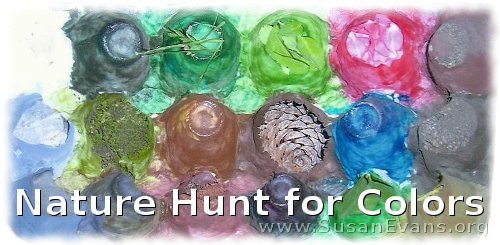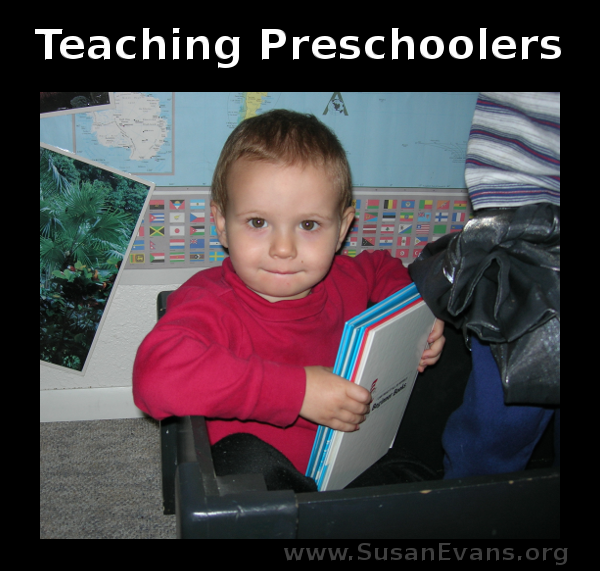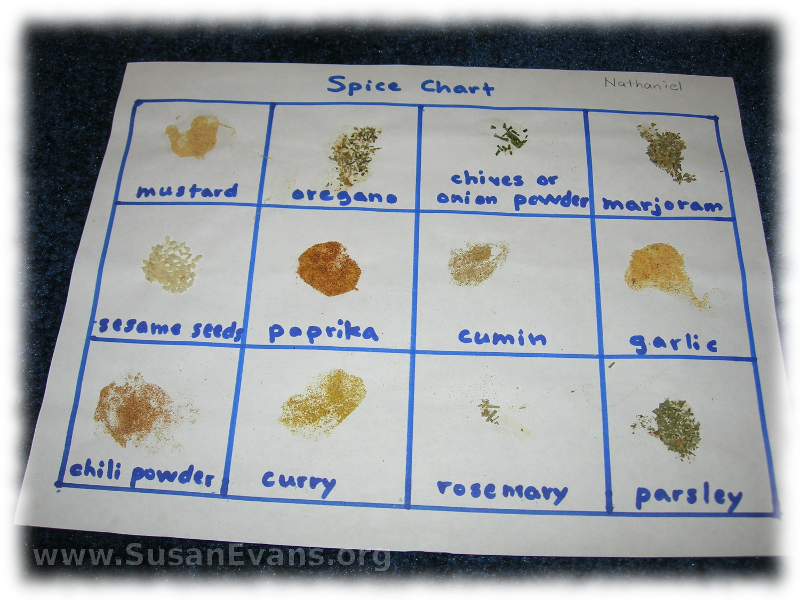When my children were toddlers and preschoolers, I grabbed an egg carton and painted each hole a different color. After it was dry, we went on a nature hunt for colors, and my children tried to find something in nature that matched the color of each hole. A small pine cone was brown, moss was light green, grass was dark green, and a small rock was gray. Pink flower petals were lying on the ground, and we picked them up. My children had a great time, and it helped them to pay closer attention to nature.
Posts Tagged ‘young children’
Nature Hunt for Colors
Tuesday, October 26th, 2010Teaching Preschoolers is Not A Sin
Thursday, October 21st, 2010I am so fed up by people who say that if you teach a toddler or preschooler anything academic, you are abusing them. This is complete bunk. All of my children loved being empowered to learn to read. I spent five minutes a day on it, and they were never upset; they always loved it.
The same with any other academic skill. They gobble it up. They love it, if it is done when they are well-rested and want to do something new. I’m not talking about workbooks. I’m talking about teaching something for five or ten minutes, maybe about an animal, maybe about numbers. Counting some frogs in a picture book takes a few seconds. It is interesting to the child. To call this abuse is ridiculous.
Studies have been done (What To Do About Your Brain-Injured Child by Glenn Doman) where babies with half their brain missing were given infant stimulation exercises and taught to read. By age two these babies were reading. They were not vegetables like the doctors said they would be. I’m sure their parents were so grateful, they had tears streaming down their face. Because the babies’ minds were stimulated, they thrived.
One reason toddlers cry all day and pitch fits is because they’re so bored. Their parents think that they can’t learn anything. The young children are just blobs that need to be fed and clothed. I wonder what they do all day. Watch TV while they’re waiting for their kid to grow up?
One statement that was made today in a workshop on preschoolers was that when all kids turn 18, they are the same. Not so. She said that someone who read at age 4 and someone else at age 7 (or even age 10) would be equal by 18. This might or might not be true depending on the personality of each of the children. But for me, my own children learned to read as toddlers. All my kids were reading independently (easy books) in their preschool years. By age 7, my oldest two sons were reading on a high school level. They’ve read so many classics in their free time. You can’t tell me kids can catch up on all the years they didn’t know how to read. They are not equals by 18. The kids that started earlier have a deeper knowledge of the world around them because they are well-read. They can pick up and read a book about any subject at any age and teach themselves from the vast treasure troves of knowledge.
Young children absolutely love learning, and their days are long, stretching out before them. They have nothing to do, except for what you do with them, and what you give to them. You can choose what will go into their minds. I taught my children the Word of God at young ages, too, and my children have such hearts for God now. They draw spiritual conclusions that are way beyond their years.
It’s worth teaching your young children.
Jady A interviewed me about Homeschooling in Early Childhood.
These were my responses to her questions:
For more information, check out the video workshop Early Childhood Education.
Spice Chart
Tuesday, October 5th, 2010No matter what your age, it’s good to be able to identify different spices by their look and smell. Make a spice chart to learn the different spices.
Even in early childhood, I did infant stimulation exercises with my babies, having them smell different spices while I was cooking or baking. When the children got a little bit older, we made a chart of different spices, making a grid and labeling each box. Then we put a circle of glue in the middle of a square and dumped a little bit of spice on it. If you pick it up, all the excess spice falls off. We did this with each square. The next day when it was dry, even my toddlers were sniffing the different spices, and my elementary-aged children told the toddlers what the spice was.
I recently saw a spice chart at the fair that is a variation on this idea. You make a “lift-the-flaps” chart by taping squares of paper on top of each square. Glue the spice onto the outside of the flap. See if you can identify the spice by the smell and the look. Then lift the flap to see the word, to check if you were right.
One time when my second son was 6 years old and was helping me cook, he cried out, “That’s not oregano, Mom!” I had accidentally gotten the wrong spice, and my son could tell by the smell that it was the wrong spice. I’m telling you, it’s useful to be able to identify spices.
Tubes and Connectors
Friday, September 3rd, 2010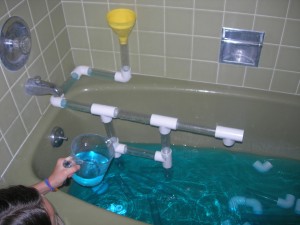 My children always enjoyed playing with tubes and connectors in the bath tub. They would join the tubes and connectors in many different ways, and they would put a funnel in the top to make it easier to put water into the contraption. If you tint the water blue or some other color (you can buy something that looks like pills at Toys R Us or Walmart in the children’s bath section), the children can see the water rushing through the clear tubing. If you have two possible ways for the water to go, you can ask your children which way they think the water will go. Sometimes it goes both ways equally, but often it will go down only one tube. You can talk about gravity and see what happens if you tilt the whole contraption.
My children always enjoyed playing with tubes and connectors in the bath tub. They would join the tubes and connectors in many different ways, and they would put a funnel in the top to make it easier to put water into the contraption. If you tint the water blue or some other color (you can buy something that looks like pills at Toys R Us or Walmart in the children’s bath section), the children can see the water rushing through the clear tubing. If you have two possible ways for the water to go, you can ask your children which way they think the water will go. Sometimes it goes both ways equally, but often it will go down only one tube. You can talk about gravity and see what happens if you tilt the whole contraption.
One really fun experiment you can do is to combine two different colors to see what new color emerges. Put one color of water down one tube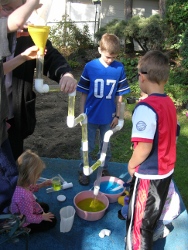 , and another color down another tube at the same time, and see what color comes out at the bottom. If you have no money for those color pills, you can use food coloring from your kitchen, and I would do it outside, making it land in a wide bucket. Your kids should wear old clothes, because food coloring can stain your clothes.
, and another color down another tube at the same time, and see what color comes out at the bottom. If you have no money for those color pills, you can use food coloring from your kitchen, and I would do it outside, making it land in a wide bucket. Your kids should wear old clothes, because food coloring can stain your clothes.
You can have a great time even if you just use clear water. My children built and designed many contraptions, and they never built the same thing twice. It was an open-ended activity that was educational as well as fun.
If you like this idea, you will love my audio workshop entitled “Bath Time Fun: 49 Ideas for Homeschoolers,” available on my website.
I’m giving away one copy of the Bath Time Fun workshop. Enter the drawing below:
